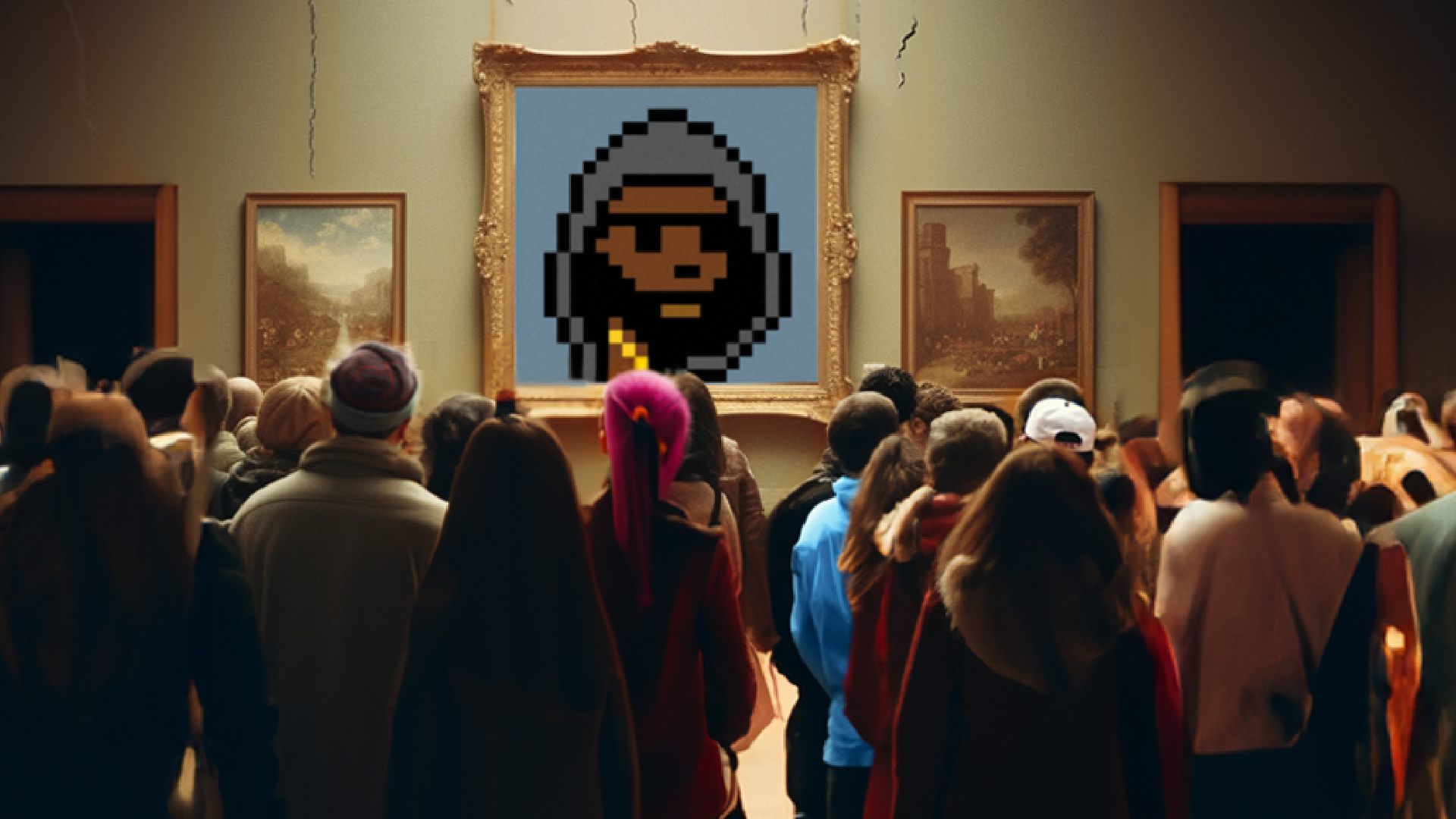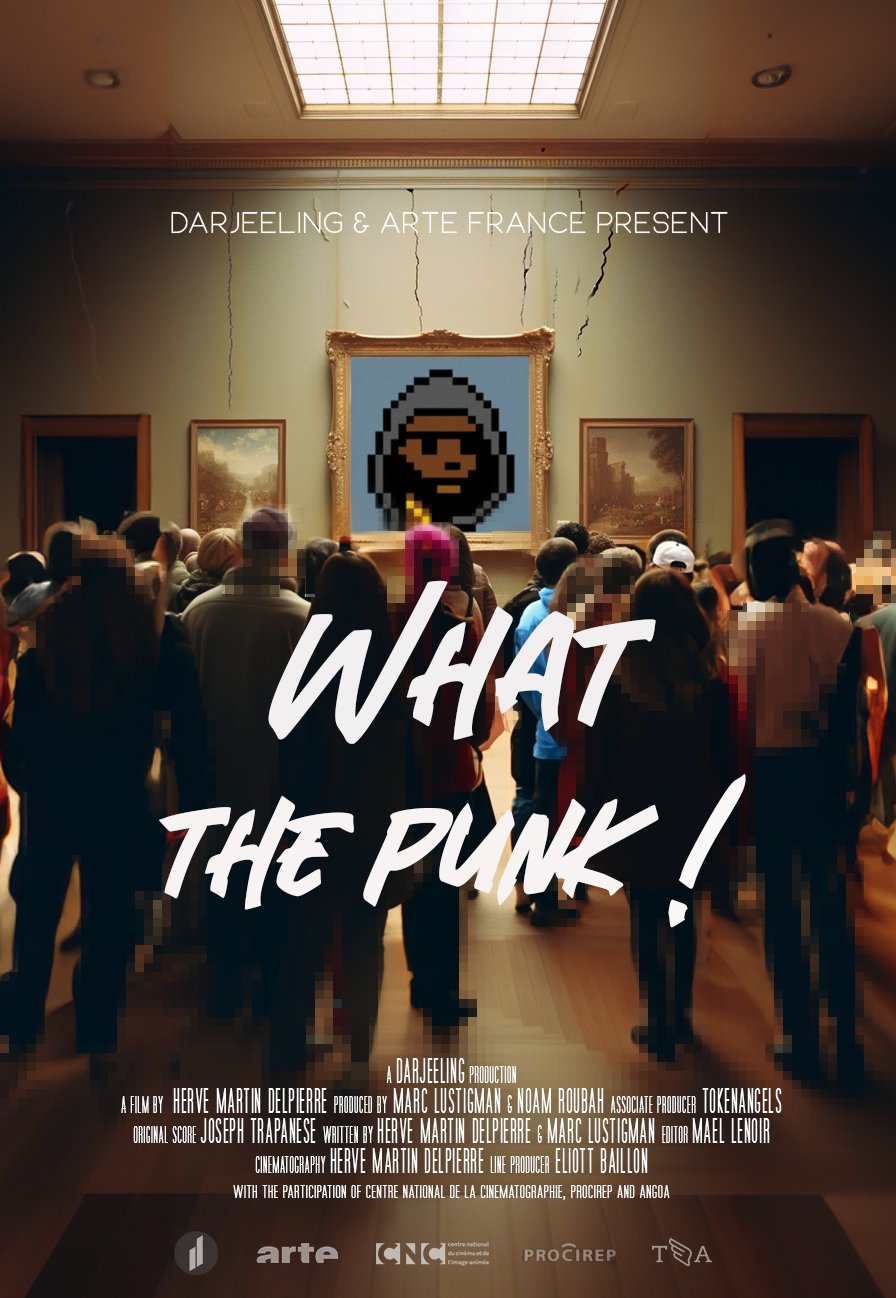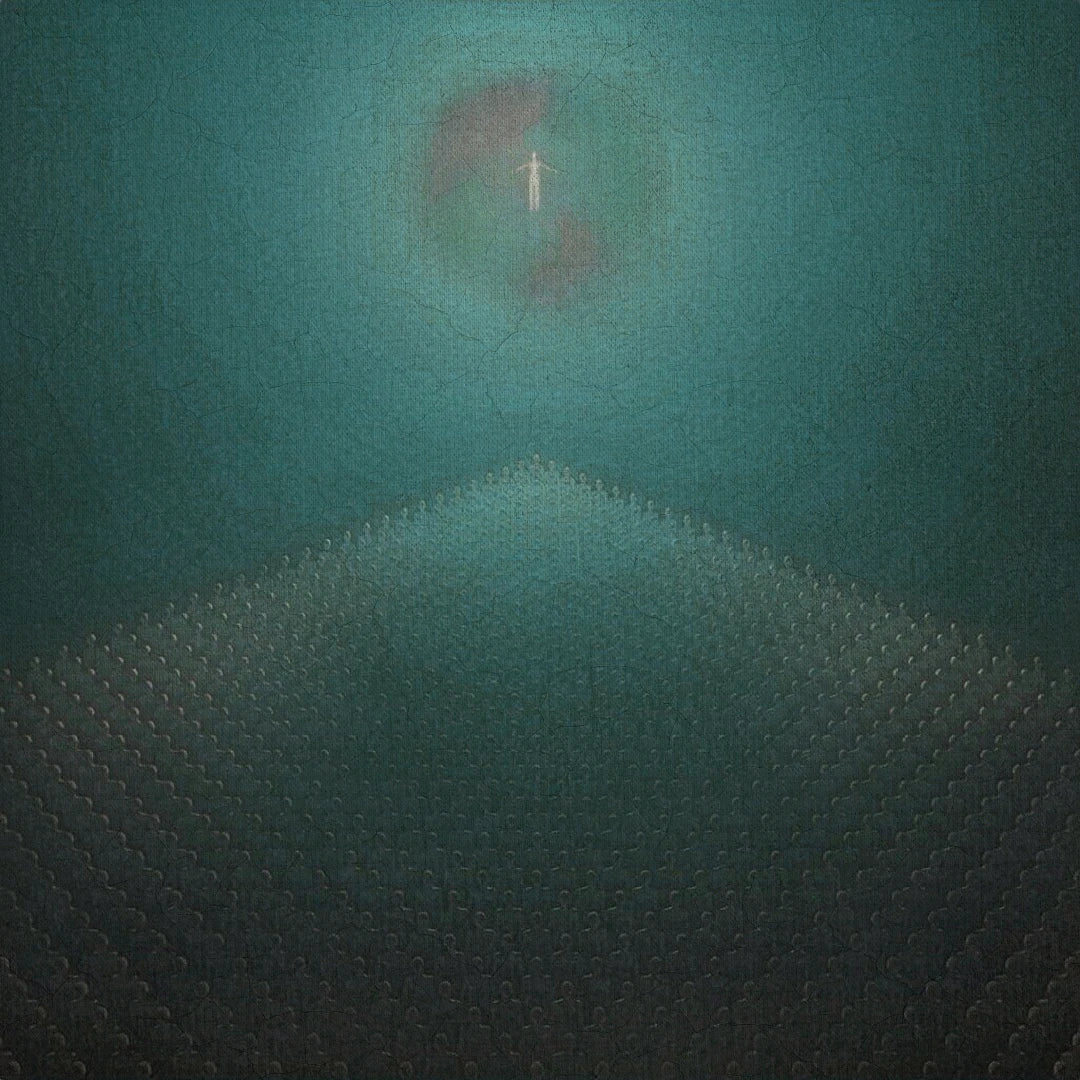
Please Don’t Stop Filmmaking: On Film3 With Hervé Martin-Delpierre, Film Freako, and Dosgatos
Conversation
Jan 18,2024 Written by New Society
In the realm of filmmaking, where institutional dominance has held sway for decades, the journey for individual filmmakers has been far from facile. Navigating the intricacies of financing and distribution often leaves them with little recourse but to operate within the umbrella of a renowned production house.
But…
The advent of blockchain technology has ushered in a transformative era for these filmmakers, presenting unprecedented opportunities both culturally and technologically. While challenges persist, they serve as the crucible for forging authentic narratives, ultimately bringing forth a compelling exploration of creativity and cinematic expression to a wider audience.
Against this backdrop, we engage in a conversation with 3 inspiring figures in the Film3 industry, a term denoting the intersection of the filmmaking and blockchain:
Hervé Martin-Delpierre: Renowned for works like "Daft Punk Unchained" (2015), “Game Fever” (2017), “The Fan” (2018). Currently directing "What the Punk!," a documentary film chronicling the history of CryptoPunks and Crypto art, produced by Darjeeling and coproduced with Arte and TokenAngels.
Luis Enrique Vanegas Obando, AKA “Film Freako”: Founder of Coders Room, a global film production collective leveraging web3 technology to revolutionize genre filmmaking for the digital age.
Dual-artists Hannah and Díma, AKA "Dosgatos": A filmmaking family based in Barcelona, actively crafting "The Cult," a new sci-fi miniseries.
This dialogue not only sheds light on the stories of independent filmmakers but also underscores the profound impact of blockchain evolutions on the Film3 landscape. And we at New Society, as ordinary individuals, are happy to catch up with this fantastic stepping stone and come closer to the filmmaking industry than ever before.
New Society: Let's go back to the moment where everything started. How did you start getting involved in the filmmaking industry? And how did you start to explore the intersection of filmmaking and Web3?
Hervé Martin-Delpierre : For over two decades, I've dedicated myself to crafting documentary films, collaborating from the outset with internet platforms affiliated with major international television channels such as the BBC in England and Arte in Europe. I've long held the belief that the conventional television model has become obsolete. A persistent challenge for documentary filmmakers, and fiction creators alike, lies in the failure of financing and distribution practices to keep pace with rapid technological advancements. And that's how I started to explore Film3.
Dosgatos: I delved into the world of filmmaking approximately a decade ago during my time in film school, where I actively participated in various diploma projects centered around filmmaking. As a cinematographer, my focus encompassed the intricacies of camera work, lighting, composition, and movement. And then I joined a studio where my responsibilities included capturing miniature scenes, involving small-scale buildings, houses, and cars. This period predated the prevalence of computer graphics, requiring a meticulous approach to real-world physics, which I really loved.
The studio's unique approach, heavily reliant on crowdfunding for initial budgeting (typically accumulating the first 40% before larger investors entered the scene), left a lasting impression on me: this experience stood in stark contrast to some production companies where the purpose behind certain projects remained unclear. Above all, the collaborative energy and support from people of diverse nationalities resonated with me deeply.
What I found extremely cool in exploring the utilization of blockchain technologies was, beyond mere acknowledgment in the credits, investors could now partake in revenue distribution, a feature enshrined in unalterable smart contracts. This innovation not only ensures transparency but fosters a sense of trust between creators and investors, further elevating the collaborative filmmaking experience.
Film Freako: I've been immersed in the world of filmmaking for around 15 years, predominantly navigating the indie scene. Rather than aligning with major production companies, my projects have often found support through award grants and crowdfunding initiatives. My creative focus spans fantasy, drama sci-fi, and horror genres.
My affinity for technology deepened during the initial stages of the pandemic, spurred by an unexpected foray into the realm of crypto through my mother-in-law. Beyond the allure of potential generational wealth, what truly captivated me was the concept of decentralization, redistributing power from institutions to individuals. This newfound passion led me to explore crypto investments and various projects, eventually stumbling upon NFTs. Initially venturing beyond art NFTs, I also experimented with diverse coins and blockchain games, experiencing both successes and setbacks.
As the pandemic's grip loosened, returning to normalcy beckoned, but my fascination with NFTs persisted. Towards the end of 2020, I decided to merge my two passions — NFTs and film. In a test project, I collaborated with 42 actors, creating 84 NFTs, envisioning a unique intersection of NFTs and filmmaking. Although the initial plan was to fund a series through these NFTs, the market downturn posed challenges.
Fortuitously, I had completed production on a short film named "Elena" before the downturn, which I released on the blockchain. Despite the market challenges, "Elena" became a catalyst for community engagement, attracting collectors and deepening my involvement in the space. This journey led me to connect the dots between Web3 and film, a synergy now referred to as “Film3”. Back then, the concept of Film3 already existed but had not fully crystallized.

New Society: Film Freako, as founder of the Vox-In collective, you have successfully spearheaded the creation of numerous high-caliber works that have elevated the realms of fantasy, horror, and sci-fi genres. Could you elaborate on the evolution you've observed within the relatively brief history of the Film3 space?
Film Freako: While it may feel like the Film3 space has been around for ages, in reality, it's a relatively new frontier, and we're all navigating its intricacies. In the early days, there was a collective anticipation to witness the first Web3 film, to see who would pioneer this new form of cinematic expression.
Miguel Faus made waves by releasing "CALLADITA," marking the inception of films funded by NFTs. Soon after, we had the milestone with the first actual film dropped on the blockchain. In the course of this evolution, I technically contributed the first native Latin American short film to the blockchain, though that distinction has become less significant over time.
🔥 OFFICIAL TRAILER 🔥
— Miguel Faus 🎥 CALLADITA FILM (@miguelfaus) October 6, 2023
CALLADITA / THE QUIET MAID, the First European Movie ever funded by NFTs, is Coming Soon. pic.twitter.com/G82J75zPkL
A notable shift occurred as we moved forward in time: Rather than persisting in the effort to mint entire films on the blockchain, the community began exploring alternatives. Strategies emerged, such as creating PFPs and minting tickets. The trend of minting entire films on the blockchain gradually waned, prompting a shift in focus. While this transition has been underway for a while, I believe it's a noteworthy aspect that merits reflection.
New Society: And why do you think people stopped minting films on the blockchain?
Film Freako: I think it's due to the blockchain infrastructure that doesn't yet enable video playbacks. For short videos, it's possible, but for films that are in longer formats, that's almost impossible due to the file weight. You could potentially play the video back using a specific IPFS link, but it's complicated.
Dosgatos: I second that. Even when I'm just trying to upload a 5-second video to traditional NFT marketplaces, I realize the color is distorted and quality doesn't look right. And films are extremely sensitive to that.
Film Freako: Exactly. But honestly, I want to do it again. I want to mint my films and sell them, because I want to have the provenance of the blockchain. Having a traceable record on the blockchain ensures the film's existence, offering a layer of protection for copyrights, regardless of unforeseen circumstances.
New Society: Hervé, you describe “What the Punk” as a bridge between the classical production world and the crypto world. With the “What the Punk!” release coming soon, what would you say you're able to do differently this time, and why does it matter?
Hervé Martin-Delpierre: "What The Punk!" is crafted under the creative and dynamic umbrella of Darjeeling Production, a production company known for its ingenuity. The film draws its financial support from a unique blend of traditional channels, including major networks like ArteTV and European institutions, as well as partners from the crypto realm. This funding model is unconventional but necessary for a project of this scale and ambition.
The film serves as a pioneering venture, aiming to demonstrate to a global audience that Crypto Art stands as a significant artistic movement in our modern era. Positioned as a bridge between the "classic" world and the emerging "Web3" landscape, "What The Punk!" operates on multiple levels. It aspires to be more than just a cinematic experience; it aims to become a cultural object fostering connections between these distinct worlds, sparking conversations, igniting ideas, and cultivating a shared cultural dialogue.

New Society: Dosgatos, on "The Cult" website, you outline the project's progression through four distinct phases. Could you provide additional insights into the specifics of "The Cult" and elaborate on your current stage in the production journey?
Dosgatos: "The Cult" embarks on a journey into the exploration of the Tukdam meditation phenomenon through studies on monks led by our heroine. This is a real phenomenon, scientifically studied by neuroscientists like Richard Davidson. The "Tukdam Project," led by Dr. Davidson, aims to explore the postmortem meditative state cultivated by Tibetan Buddhist practitioners. It seeks to understand the neural or biological mechanisms involved in Tukdam, where practitioners are said to delay decomposition after death. Despite scientific attempts through documentaries, the enigma of this deep meditation and its connection to consciousness remains unsolved.
In short, "The Cult" is a story about a young neuroscientist named Pia, who becomes entangled in a war between technological and spiritual cults. Just before the conflict, she discovers a way to glimpse into the near future. To see further and find the key to saving our planet from the war's consequences, she must journey into her past life.
Currently situated in the initial phase of the project, the "Graphic Novel" serves as the foundation. Presented in two volumes with a total of four episodes, the revenue generated from the novel contributes to financing the subsequent film production. Engaging with potential publishers for wider distribution, we're also exploring the possibility of releasing an interactive e-book format, where the artworks come to life, enhancing the reader's experience.
New Society: Discussing financing is a particularly intriguing facet within the Film3 domain. Could you elaborate on the intricacies of how you are funding the production of your films? Specifically, has the integration of blockchain influenced or altered your financing model in any significant way?
Dosgatos: Our initial foray into funding commenced through a collaborative collection with Julia Slip, a skilled nude photography artist and model. While we were novices in the NFT space, Julia brought with her a wealth of experience and a collector base. The success of our joint collection not only provided us with a means of sustenance but also facilitated connections with collectors who became pivotal in discussions about our Film3 project, "The Cult."
Now minting 💜💙
— 🎬 «The Cult» - new sci-fi miniseries (@TheCultSeries) December 16, 2023
AURA
collaboration
with @nudity_slip pic.twitter.com/2o1kS9O34R
To engage these early supporters, we devised a concise 3-piece collection aligning with the roles of Contributing Producer, Co-Executive Producer, and Executive Producer in the film credits. Collectors could invest in the project by minting one of these NFTs. A special acknowledgment goes to Danpolko, our very first investor who acquired the producer NFT and who has already supported us multiple times. It is largely due to him that we are on the verge of completing the second episode of the Graphic Novel — a testament to his invaluable support as our angel investor.
Therefore, undoubtedly, the utilization of blockchain technologies has significantly influenced and reshaped our financing model.

Hervé Martin-Delpierre : The internet, despite its transformative potential, has not matched the financial clout of traditional television and cinema. This discrepancy arises from the lack of viable business models that can generate substantial revenues beyond the confines of traditional broadcasting. My films, such as "Daft Punk Unchained" with a production cost close to $1 million and "Game Fever" with a budget of $1.6 million, posed the critical question: How does one secure such funds in the period spanning 2015 to 2020 without relying on conventional film market financing?
While platforms like Netflix have emerged, I contend that they do not represent a revolution; rather, they function as TV channels devoid of language and cultural limitations, adhering to the same conventional production patterns. The true potential for revolution lies in Web3, provided it can articulate a compelling model for creators and producers, along with successfully identifying and engaging diverse audiences.
Film Freako: This is indeed a fascinating topic, and it has left a significant impact on my approach as well. Let me provide some context.
Initially, there was a belief that Web3 would offer a transformative solution to our financing challenges as filmmakers. However, the reality has been a bit elusive, and we are still navigating this terrain. While there are instances, such as my experience funding a couple of films, where Web3 has proven effective, I'm uncertain if it reflects the current market trend.
My initial foray into blockchain cinema, "Elena," was funded through governmental grants available here in Colombia, providing ample resources for production. Following "Elena," we embarked on several films, drawing funding from two different sources. On one front, we sought support from platforms like DCP, a non-profit organization that aids filmmakers through grants. Simultaneously, we engaged in selling a few NFTs, contributing partially to the funding, although relying solely on NFTs has not entirely financed our film productions.
Currently, my strategy involves rallying my community and friends from the Web3 space. We collaborate on writing and creating projects, exploring funding avenues beyond Film3. In 2023, we successfully secured two governmental grants, allowing us to produce two films. Film3, for me at this moment, signifies building a community of creative individuals who collaborate while simultaneously seeking financial support from alternative sources.
While there is potential for returning to funding films through NFTs when the market rebounds, the current landscape presents challenges. It remains a possibility, and we continue to navigate this complex dynamic.
New Society: This isn't exclusive to Film3; it's a broader trend affecting Web3 projects overall. In the past, a multitude of projects sought to self-fund through NFT drops or token sales. However, in 2023, the prevailing trend observed in crypto projects shifted towards seeking funding from business angels and venture capitalists, particularly as projects matured.
Given that filmmaking is commonly acknowledged as a costly endeavor, for example, Hervé just mentioned $1 Million for “Daft Punk Unchained” and $1.6 Million for “Game Fever”. Dosgatos and Film Freako, could you also provide insights into the typical funding requirements you encounter when undertaking film production?
Film Freako: In Colombia, the grant typically amounts to around $10k, which provides ample support for the production of a short, low-budget film. However, when aiming for a larger feature film, the process becomes significantly more intricate and expensive.
Also, replicating this approach is not straightforward for a couple of reasons. Firstly, the production costs in Colombia are comparatively low. Secondly, not every country offers filmmaking grants, making it challenging to emulate this model, especially in countries like the U.S.
Dosgatos: For us, the choice of the production country significantly influences the budget considerations. Currently, we're contemplating filming in Kazakhstan or Armenia, which currently have a high production level and more favorable tax conditions. A more precise estimation will emerge once we complete our graphic novel. At present, our initial projection for the production cost of each episode stands at half a million, factoring in European expenses.
New Society: Perhaps it's worth considering Colombia as a film production destination, ;) It's enlightening to explore the developments in the Film3 industry alongside you all. What would you identify as the primary challenges you encounter in your filmmaking journey?
Hervé Martin-Delpierre : Despite being barely completed, the film "What The Punk!" has already secured selections in the most prestigious festivals, marking a significant achievement. However, for Marc Lustigman, the producer, and his associates, the task at hand is to surpass the hurdles in distribution and ensure the film attains maximum exposure worldwide. This presents a formidable challenge, and I am optimistic that the forthcoming weeks and months will bring forth innovative and impactful solutions for them to navigate this endeavor successfully.
Dosgatos: Primarily, the challenge I encounter is the constraint of time, specifically the looming deadlines. Despite the multitude of ideas we aspire to bring to life, the reality is that we are a team of only two individuals. Moreover, financing emerges as a substantial hurdle. As a filmmaker striving for enhanced outcomes, the need for equipment, subscriptions, and the desire to expand the team necessitate a robust financial foundation.
Film Freako: It's essentially pretty similar for me. In fact, I perceive us as fortunate because we have the opportunity to engage in activities we are passionate about. This, to me, is the most crucial aspect. Last year, we undertook about seven diverse projects, marking it as the most productive year of my life. However, to accomplish all the Film3 projects I aspired to, I had to relinquish my Web2 pursuits, including commercials, halfway through the year.
So the challenge I currently face revolves around establishing sustainability in my Film3 endeavors. The Web2 segment was my primary source of livelihood, and its absence poses a financial sustainability concern. I am striving to strike a balance where I can pursue my films while sustaining a daily income, a conundrum that I am actively working on resolving.
New Society: And what have been the most rewarding things in your journey?
Dosgatos: I believe for us, it's about networking and cultivating relationships. Engaging with remarkable individuals in the space, like Danpolko, has been immensely enriching. Our perspective centers on the contributions we can make to the community and the collaborations we can foster.
It transcends the realm of mere webpages or phone applications that consume time; rather, it emphasizes genuine human connections. Unlike the passive scrolling on Instagram, our interactions now involve meaningful conversations with individuals who share interests in Buddhism, consciousness, and scientific exploration.
Film Freako: For me, there are two immensely gratifying aspects. Firstly, it's when people watch my films and take the time to reach out, sharing their thoughts and feelings. I encountered this firsthand with "Elena" as individuals came back to me with tears in their eyes, expressing their gratitude.
The joy lies in hearing their life stories and how profoundly they connect with the film, finding a form of healing through the narrative I crafted. Philosophically, this connection with the audience stands out as the most rewarding aspect.
From a pragmatic standpoint, the ultimate satisfaction would be to receive substantial compensation for creating films that I am passionate about — essentially, being well-paid to pursue my cinematic endeavors.
Hervé Martin-Delpierre : Contemporary philosophers discuss the dissolution of boundaries between the tangible reality and the virtual realm, and a similar integration is essential between traditional film distribution and Web3. To have a truly global impact, a film must transcend geographic constraints.
For a director, there's nothing more fulfilling than engaging with people worldwide who share their thoughts on your films. I've experienced this firsthand with "Daft Punk Unchained," a constant and universal dialogue — the film has sold in more than 80 countries. The aspiration is to replicate this boundary-free connection with "What The Punk!" — a seamless interaction devoid of limitations, be they real or virtual.